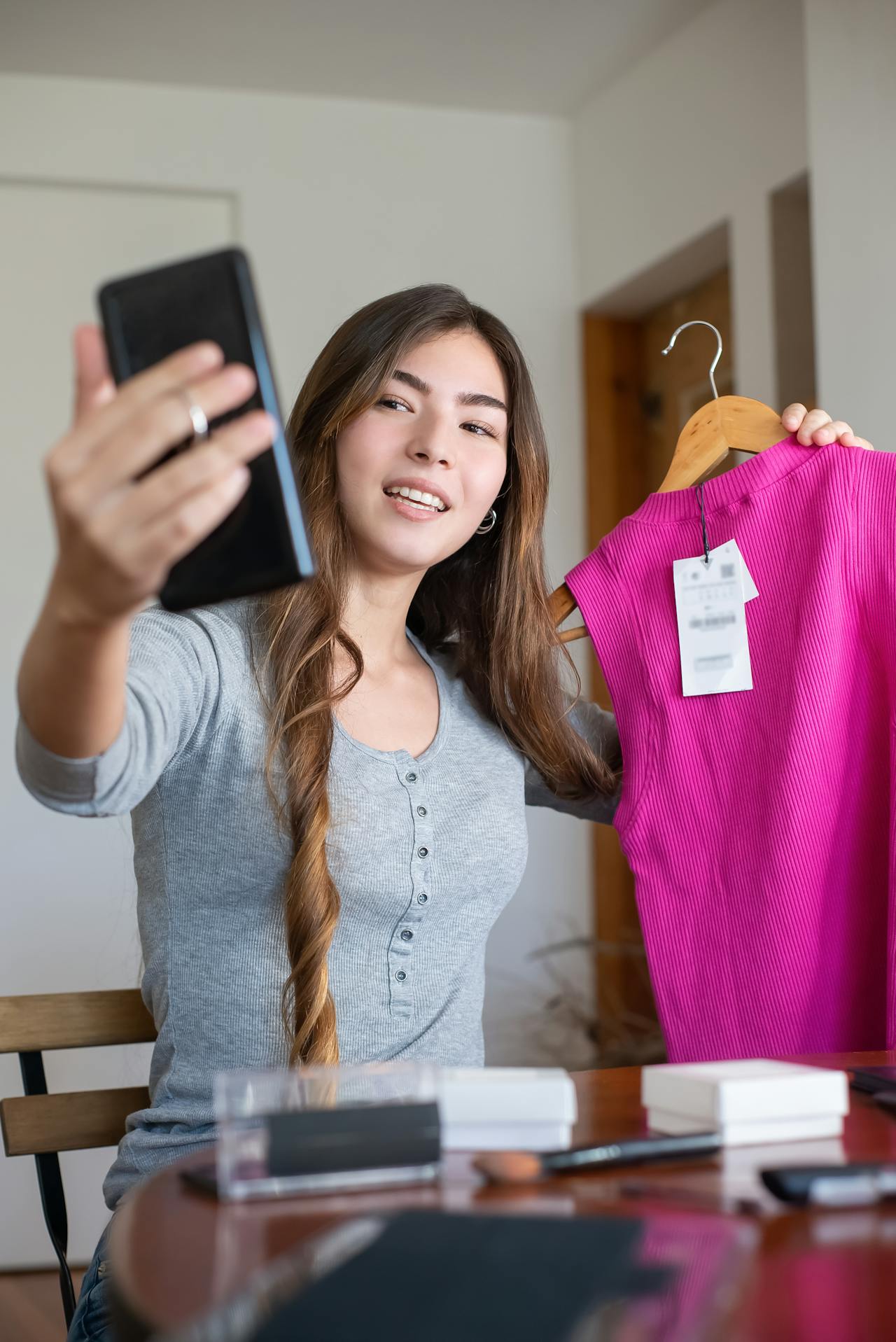Understanding Influencer Marketing Search
Influencer marketing search focuses on how brands locate and evaluate creators who can reach the right audience. It involves both technology-driven tools and human judgment to ensure partnerships align with campaign goals.
How Influencer Marketing Search Works
Influencer marketing search uses data and platforms to identify creators who match a brand’s target audience. Companies often rely on influencer search tools that filter profiles by follower count, engagement rates, audience demographics, and content style.
This process helps marketers avoid random outreach and instead focus on creators who are most likely to deliver results. For example, a skincare brand may search for influencers with strong engagement among young adults interested in health and beauty.
Search also adapts to changing user behavior. Many younger audiences use platforms like TikTok or YouTube as discovery engines instead of traditional search sites. This shift means influencers often act as the first point of contact between a consumer and a product.
By combining analytics with platform search features, brands can narrow down large pools of creators into a manageable list of strong candidates.
Key Elements of Effective Search
An effective influencer search depends on several measurable factors:
- Relevance: The influencer’s content must align with the brand’s products or values.
- Reach: Audience size should match the campaign’s scale.
- Engagement: High interaction rates often matter more than follower count.
- Authenticity: Followers should trust the influencer’s recommendations.
Marketers also consider audience insights such as age, location, and interests. These details ensure the influencer’s followers match the brand’s customer profile.
Another key element is performance history. Reviewing past collaborations and campaign outcomes helps predict future effectiveness. Brands often compare influencers side by side in a table or dashboard to weigh these factors before making a decision.
Types of Influencer Marketing Search
Finding the right influencers depends on the approach used to locate and evaluate them. Methods vary in accuracy, efficiency, and cost, and each comes with trade-offs that matter for brands and agencies managing campaigns.
Manual Influencer Discovery
Manual discovery involves searching for influencers directly on platforms like Instagram, TikTok, or YouTube. Marketers often use hashtags, keywords, or location filters to narrow results. This approach gives them full control over the selection process.
It allows close review of content quality, engagement style, and audience interaction. Many smaller businesses prefer this method because it requires no paid tools.
However, it is time-consuming and can miss hidden opportunities. Checking follower authenticity, engagement rates, and audience demographics requires extra effort. To stay organized, marketers often use spreadsheets or tracking documents to compare candidates.
Pros: No cost, detailed review, flexible.
Cons: Slow process, risk of bias, harder to scale.
Platform-Based Search Methods
Influencer marketing platforms provide searchable databases of creators. These tools often include filters for "niche, audience size, location, engagement rate, and pricing". Examples include Heepsy, Aspire, Upfluence, and CreatorIQ.
Using a platform speeds up the process and reduces manual work. Many tools also offer campaign management features like contract handling, performance tracking, and reporting. This makes it easier for teams to manage multiple partnerships at once.
Platforms usually require a subscription, which can be expensive for small businesses. Data accuracy also depends on how often the tool updates its database. Still, for larger campaigns, the efficiency and scale often outweigh the cost.
Advantages: Saves time, scalable, built-in analytics.
Limitations: Subscription fees, possible outdated data.
AI-Powered Influencer Identification
AI-driven tools analyze large amounts of social media data to match brands with influencers. These systems use machine learning to detect patterns in content style, audience behavior, and engagement quality.
Unlike manual or platform-only searches, AI can uncover micro and nano-influencers who may not appear in traditional databases. It also helps flag fake followers and inflated engagement rates by scanning for unusual activity.
AI tools often integrate predictive analytics, estimating how well an influencer might perform for a campaign. They can also suggest lookalike creators to expand reach.
Key strengths: Advanced fraud detection, predictive insights, discovery of hidden talent.
Challenges: Higher cost, reliance on algorithm accuracy, limited transparency in some systems.
Influencer Marketing Search Tools
Brands use influencer marketing search tools to find creators who match their target audience, campaign goals, and budget. These tools help filter large databases of influencers, track engagement data, and compare potential partners across different platforms.

Popular Platforms and Software
Many marketers rely on established platforms that provide access to large influencer databases. These tools often cover multiple social networks such as Instagram, TikTok, and YouTube, making it easier to manage campaigns across channels.
Some of the most used options include Upfluence, Aspire, and GRIN. Each offers search filters, campaign management features, and reporting dashboards.
Other platforms focus on discovery only, such as influencer search tools that let users filter by niche, location, audience demographics, and engagement rates. These are especially useful for smaller teams that need quick and precise results without paying for full campaign management suites.
Marketers often choose between all-in-one platforms and specialized search tools depending on their budget and workflow. Specialized tools may be faster for discovery, while larger platforms give more control over long-term influencer relationships.
Why Use Heepsy for Influencer Marketing Search?
When it comes to influencer marketing search, having the right tool can save brands time and deliver better results. Heepsy is one of the leading influencer marketing platforms that helps businesses quickly find and evaluate Instagram, YouTube, TikTok, and Twitch creators. With advanced filters—such as audience demographics, engagement rates, and follower authenticity—Heepsy makes it easy to identify influencers who truly match your campaign goals. Whether you’re a small business or a global brand, using Heepsy streamlines the process of finding the right influencers and ensures your partnerships drive measurable impact.
Features to Look For
The most valuable tools provide advanced filtering options. Being able to sort influencers by audience age, location, interests, and follower count helps brands avoid mismatched partnerships.
Engagement metrics are also critical. A tool should show average likes, comments, and growth trends to confirm that an influencer’s audience is active rather than inflated by inactive accounts.
Integration with campaign tracking makes a difference too. Features like contract management, content approval, and performance tracking reduce manual tasks. Some platforms also include fraud detection to help identify fake followers or suspicious engagement.
Ease of use matters as well. A clear dashboard, exportable reports, and flexible pricing can save time and make the tool more accessible to small businesses.
Comparison of Leading Solutions
Different platforms excel in different areas. For example:
Marketers should compare based on their needs. Those running frequent campaigns may benefit from all-in-one solutions, while smaller teams might prioritize affordability and speed of discovery.
Some businesses even use a mix of tools, combining one for influencer discovery and another for campaign execution. This approach allows them to balance cost with functionality.
Data Sources for Influencer Discovery
Influencer discovery relies on accurate and reliable data. Companies often combine information from public platforms, external databases, and their own internal records to identify creators who fit their goals. Each source offers different strengths, from audience demographics to campaign performance insights.
Social Media Platforms
Social media platforms provide the most direct data on influencers. Metrics such as follower counts, engagement rates, and audience demographics come directly from the platform’s analytics tools. For example, Instagram and TikTok offer creator dashboards that show reach, impressions, and audience breakdowns.
This data is valuable because it reflects real activity rather than third-party estimates. Brands can see how many people interact with posts, what types of content perform best, and which demographics make up the audience.
However, platform data may be limited by privacy settings or only available to account owners. Publicly visible metrics like likes and comments give a partial view, but deeper insights often require influencer cooperation. Despite these limits, platform data remains the foundation for judging authenticity and engagement.
Third-Party Databases
Third-party databases collect and organize influencer data across multiple platforms. Tools like Heepsy, Modash, Storyclash, and inBeat allow brands to filter millions of creators by niche, location, audience size, or engagement quality. These databases often include advanced analytics such as audience authenticity checks and campaign tracking.
A key advantage is efficiency. Instead of searching manually on each platform, marketers can use filters to find influencers who match specific criteria. Many tools also provide estimated costs, historical performance, and brand collaboration history.
Still, third-party data may not always match official platform analytics. Estimates can vary, and some details may be outdated. For this reason, many brands use these databases for discovery but confirm details with direct platform data or influencer-provided insights before making final decisions.
Brand-Owned Data
Brands also generate valuable data from their own campaigns and customer interactions. Past influencer collaborations provide performance benchmarks such as click-through rates, conversions, and return on investment. This helps identify which types of creators deliver the strongest results.
In addition, customer data can highlight potential influencers already engaging with the brand. Loyal followers or frequent buyers with strong online presence may be effective partners.
Maintaining a structured record of influencer performance allows companies to build long-term relationships and refine selection criteria. Unlike public or third-party data, brand-owned data is tailored to specific goals, making it a unique and highly actionable resource.
Optimizing Influencer Search Strategies

Successful influencer discovery depends on clear criteria, accurate audience targeting, and careful review of engagement quality. Brands that apply structured methods reduce wasted outreach and improve campaign performance.
Setting Search Criteria
Defining search criteria creates a focused process rather than a broad, unfocused search. Brands should begin by outlining campaign goals such as awareness, lead generation, or sales. Each goal requires a different type of influencer, from micro-creators with niche audiences to larger accounts with broad reach.
Key factors often include:
- Platform (Instagram, TikTok, YouTube, etc.)
- Content style (educational, lifestyle, entertainment)
- Relevance to product category
Using these filters helps narrow the pool to influencers who align with brand values and campaign objectives. Without these guidelines, teams risk spending time on partnerships that do not drive results.
Filtering by Audience Demographics
Audience demographics matter as much as the influencer’s personal brand. A creator may have millions of followers, but if most of them fall outside the target market, the partnership delivers little value.
Marketers should review data such as:
- Age ranges
- Gender distribution
- Geographic location
- Language preferences
For example, a skincare brand targeting women ages 18–30 in North America should avoid influencers whose followers are primarily men in Europe. Many influencer platforms provide demographic breakdowns to make this filtering process faster and more accurate.
Matching audience data with customer profiles ensures that campaigns reach people most likely to engage with the product.
Evaluating Engagement Metrics
Follower count alone does not reflect influence. Engagement shows how actively an audience interacts with content, which is a stronger indicator of impact. Metrics like average likes, comments, shares, and saves reveal true audience interest.
An engagement rate between 2–5% is often considered healthy, though this varies by platform. Brands should also check for consistency across posts, since sudden spikes may signal purchased engagement.
It is also useful to compare engagement quality. Comments that show genuine interest or questions about a product carry more weight than generic responses. By focusing on both rate and quality, marketers can identify influencers who build real connections with their audiences.
Challenges in Influencer Marketing Search
Marketers face several obstacles that make it harder to identify the right influencers. Issues like fraudulent activity, privacy restrictions, and shifting platform rules directly affect how brands select and evaluate creators.
Fake Followers and Fraud
A major challenge in influencer search is the presence of fake followers and inflated engagement. Many accounts use bots or purchased followers, which makes it difficult to measure true influence. This leads to wasted budgets when brands pay for reach that does not exist.
Marketers often rely on analytics tools to detect suspicious patterns. For example, sudden spikes in follower counts or unusually low engagement rates can signal fraud. Still, these tools are not perfect and require human review to confirm results.
Brands also face the risk of impostor accounts pretending to be real influencers. These accounts can trick companies into partnerships that deliver no value. To reduce this risk, marketers need to verify identity through contracts, direct communication, and platform verification checks.
Data Privacy Concerns
Influencer search depends heavily on data, but privacy regulations limit what information platforms can share. Laws like GDPR and CCPA restrict access to personal data, making it harder to analyze audience demographics in detail.
This creates challenges when brands want to confirm that an influencer’s followers match their target market. Without access to precise data, marketers must rely on aggregated insights or third-party tools that may not always be accurate.
Privacy rules also affect how influencer databases operate. Many platforms now provide only partial audience data, which reduces transparency. As a result, companies must combine multiple data sources and use surveys or direct audience polls to fill in the gaps.
Platform Algorithm Changes
Social media platforms frequently update their algorithms, which affects influencer visibility and reach. An influencer who performs well one month may see a sudden drop in engagement after a platform update. This makes it difficult for brands to predict future performance.
Algorithm changes also impact how influencer content is discovered. For example, a shift toward short-form video can reduce the reach of photo-driven creators. Brands must adapt quickly by tracking platform trends and adjusting their influencer selection criteria.
To manage this challenge, marketers often diversify across multiple platforms. By spreading campaigns across different channels, they reduce the risk of relying too heavily on one algorithm. This approach helps maintain stable reach even when major changes occur.
Measuring Success in Influencer Discovery
Brands need clear ways to evaluate whether they are choosing the right influencers. Success depends on tracking measurable results and linking those outcomes to campaign goals.
Key Performance Indicators
Marketers use specific metrics to decide if an influencer is a good fit. These Key Performance Indicators (KPIs) often include:
- Engagement rate (likes, comments, shares compared to followers)
- Audience demographics (age, gender, location, interests)
- Reach and impressions (how many people see the content)
- Conversion rate (clicks, sign-ups, or sales driven by the influencer)
Each KPI provides a different view of performance. For example, a high engagement rate shows active interaction, while conversion rate connects directly to revenue.
Brands should also consider content quality and authenticity. An influencer with fewer followers but strong audience trust can often deliver better results than a larger account with low engagement.
Choosing the right KPIs depends on campaign goals. A product launch may focus on reach, while a sales campaign may track conversions.
Tracking Influencer Performance
After selecting influencers, companies must track how they perform over time. Tools like Upfluence, Sprout Social, and MightyScout provide dashboards that monitor engagement, reach, and ROI in real time.
Tracking should not stop at vanity metrics. Brands benefit from reviewing cost per engagement (CPE) and return on investment (ROI) to judge efficiency.
A simple table can help compare influencers:
By measuring these factors, brands can identify which partnerships add value and which may need adjustment.
Emerging Trends in Influencer Marketing Search
Brands now use search data to guide influencer campaigns. They look at what people search for and match it with content created by influencers. This helps campaigns feel more relevant and timely.
Artificial intelligence plays a growing role in this process. AI tools can analyze search trends, predict audience interests, and suggest the right influencers. This allows companies to create more personalized campaigns.
Smaller creators, such as nano and micro influencers, gain more attention. Their audiences often trust them more, which makes their content align better with search-driven intent. This shift helps brands reach niche groups with higher engagement.
Sustainability and authenticity also shape influencer search strategies. People often search for transparent and ethical brands, so influencers who highlight these values become more important.
Key areas of growth include:
- AI-powered recommendations for influencer selection
- Integration of search intent into campaign planning
- Focus on niche creators with engaged communities
- Content tied to ethical and sustainable topics
TrendImpact on SearchAI integrationImproves targeting and personalizationNano influencersBuilds trust in niche audiencesAuthentic storytellingMatches consumer search for transparencyLong-term partnershipsAligns with ongoing search interest
Future Outlook for Influencer Marketing Search
Influencer marketing is expected to grow steadily through 2025 and beyond. Global spending is projected to reach over $32 billion by the end of 2025, showing that brands continue to invest in creators to reach audiences.
Search within influencer marketing will rely more on AI-driven tools. These tools will help brands identify the right influencers, predict campaign performance, and track engagement more accurately.
Key focus areas include:
- Authenticity: Audiences respond better to genuine content.
- Community-building: Brands seek influencers who foster loyal groups.
- Cross-channel visibility: Campaigns will span TikTok, Instagram, YouTube, and emerging platforms.
A major shift comes from micro and nano influencers. They often have smaller audiences but higher engagement, making them attractive for targeted campaigns. This trend will likely expand as search tools improve at finding niche voices.
TrendImpact on SearchAI IntegrationFaster influencer discovery and performance insightsMicro/Nano InfluencersMore precise targeting and stronger engagementShoppable ContentEasier tracking of direct sales impactTransparency & RegulationHigher demand for verified data
As regulations tighten, brands will place greater weight on transparent data and verified metrics. Search platforms that provide reliable insights will gain importance in guiding campaigns.
Influencer marketing search is also expected to integrate with e-commerce features, allowing direct links between content and purchases. This makes it easier to measure return on investment and refine strategies.



